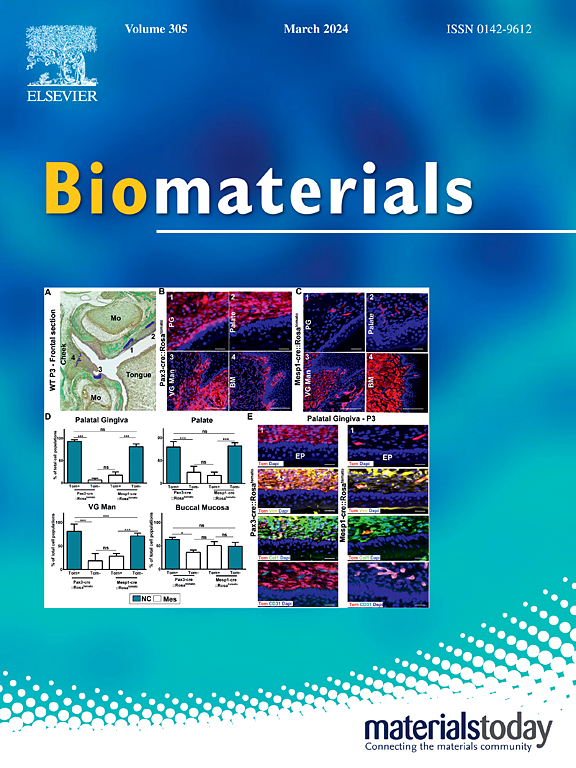Structurally defined cartilaginous MEW-assembloids for critical-size long bone healing
IF 12.8
1区 医学
Q1 ENGINEERING, BIOMEDICAL
引用次数: 0
Abstract
Bone defects exceeding a critical size pose significant clinical challenges due to their inability to heal spontaneously. Traditional treatments including autografts and synthetic implants, are often suffer from limitations such as donor site morbidity, infection risk, and poor integration. This study explores a novel approach using MEW-assembloid which combine Melt electrowriting (MEW) scaffolds with cartilaginous microtissues to enhance bone healing. Here, we fabricated bucket-shaped MEW scaffolds (OMesh and CMesh) to optimize microtissue retention and integration, with the OMesh design showing effective shape retention after microtissue seeding. To adapt the scaffold dimensions for in vivo implantation, we introduced elongated MEW (EMesh) based on the OMesh design, forming EMesh-assembloid. These constructs were evaluated for their ability to undergo endochondral ossification and mineralization in subcutaneous implants. Additionally, tubular MEW scaffolds were also created as stabilizers around EMesh-assembloid for orthotopic implantation and showed substantial new bone formation and nearly full defect bridging in a critical-sized mouse tibia defect model after 8 weeks. Our results indicates that MEW-assembloid offer a robust strategy for tissue engineering, enhancing the structural and functional integration of implants, and providing an innovation solution for the repair and regeneration of critical bone defects, potentially advancing clinical treatments for bone regeneration.

求助全文
约1分钟内获得全文
求助全文
来源期刊

Biomaterials
工程技术-材料科学:生物材料
CiteScore
26.00
自引率
2.90%
发文量
565
审稿时长
46 days
期刊介绍:
Biomaterials is an international journal covering the science and clinical application of biomaterials. A biomaterial is now defined as a substance that has been engineered to take a form which, alone or as part of a complex system, is used to direct, by control of interactions with components of living systems, the course of any therapeutic or diagnostic procedure. It is the aim of the journal to provide a peer-reviewed forum for the publication of original papers and authoritative review and opinion papers dealing with the most important issues facing the use of biomaterials in clinical practice. The scope of the journal covers the wide range of physical, biological and chemical sciences that underpin the design of biomaterials and the clinical disciplines in which they are used. These sciences include polymer synthesis and characterization, drug and gene vector design, the biology of the host response, immunology and toxicology and self assembly at the nanoscale. Clinical applications include the therapies of medical technology and regenerative medicine in all clinical disciplines, and diagnostic systems that reply on innovative contrast and sensing agents. The journal is relevant to areas such as cancer diagnosis and therapy, implantable devices, drug delivery systems, gene vectors, bionanotechnology and tissue engineering.
 求助内容:
求助内容: 应助结果提醒方式:
应助结果提醒方式:


